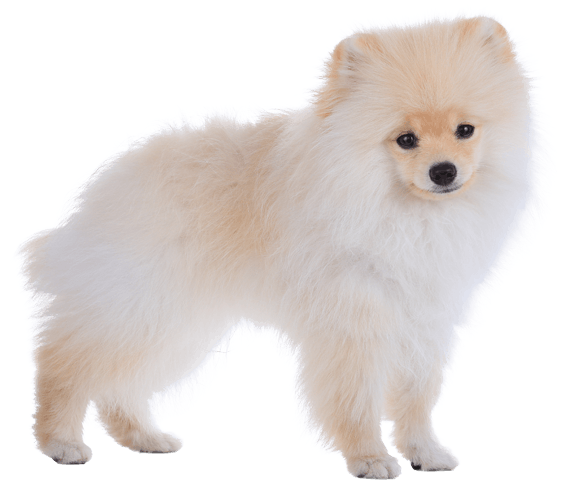Pomeranian Breed Maintenance
A wire slicker brush and metal comb should be used to brush your Pomeranian twice a week. You’ll need to part the hair when brushing to make sure you reach the undercoat.
You can trim the hair, especially around the ears, face, hind end and feet, but you don’t have to.
They don’t require regular baths, just as and when they need them. You will, however, have to brush their teeth daily and trim their nails regularly.
You may want to take them to a groomer, who can do a full groom once a month or so.
Due to their small size, this breed can live in apartments and are known as lap dogs. But, they do need a decent amount of exercise each day, through a mixture of walks and playtime. They can go on long walks but will struggle on a hot day. When out, be aware of predators such as hawks that can mistake them for rabbits. They can also escape from small spaces. Watch out for this!
They love their toys but can get bored of them easily. To prevent this (and save you from spending all your money on toys) you can rotate the ones they do have to keep it exciting for them. They will particularly enjoy toys that can be a challenge.
Pomeranian health
The Pomeranian is a fairly healthy breed, but there are — of course — some health conditions you need to be aware of. These include:
- Patellar Luxation
- Entropion
- Mono/Bilateral Cryptorchidism
- Legg-Calve-Perthes Disease
- Collapsed Trachea
There’s also a chance of epilepsy, allergies and cataracts, although these are only minor concerns.
Does your insurance cover the costs that come with these conditions? You hope you won’t need it but it’s easy to browse and compare top pet insurance providers so you're prepared if you do.
Patellar Luxation
Patellar luxation is common in toy breeds. It’s when the kneecap is dislocated from the knee joint. If the condition is congenital, the pup is born with it. If it’s developmental, it develops later in life. It’s usually in the back legs and symptoms will include limping and pain when moving their leg.
Entropion
Entropion is when the eyelids are inwards and so the eyelashes rub against the eyeball. This usually affects the lower eyelid — although it can be the upper and sometimes both. This causes discomfort and often leads to painful sores which could result in blindness. You may notice your dog pawing at their eye or squinting. They’ll require surgery to treat this.
Unilateral /Bilateral Cryptorchidism
Cryptorchidism is when one (unilateral) or both (bilateral) testicles fail to drop into the scrotum. Both should drop by eight weeks and at the very latest by 16 weeks. If they haven’t, this can cause serious and even life-threatening health issues. The only treatment is to neuter them.
Legg-Calve-Perthes Disease
Legg-Calve-Perthes Disease (LCP) is an issue with a dog's hip joint. It tends to occur within their first year. It can cause stiffness and pain. An X-ray will be required to determine if this is the cause of their symptoms such as limping. The treatment they need will depend on how severe it is. In some cases, surgery may be the only option.
Collapsed Trachea
A collapsed trachea is when the trachea has narrowed. This tends to get more serious over time, so it’s important to see your vet as soon as you suspect they may have this. Symptoms to look out for include gasping for breathing, coughing or wheezing, as well as difficulty eating and drinking.
Feeding a Pomeranian — what’s the best diet?
Your Pomeranian will benefit from high-quality protein and nutrient-dense ingredients. This will also help to keep their coats looking healthy and shiny.
Be careful not to overfeed them — their small size means they could easily become overweight.
Treats are an ideal way to reward your Pomeranian when you are training them, but make sure you take this into account when serving up their meals.
Do you want to make sure you are feeding your Pomeranian the best possible diet? Take a look at the advice from our friends at Dog Food Advisor, including the best dog food for small dogs and the best dog food for Pomeranians.






